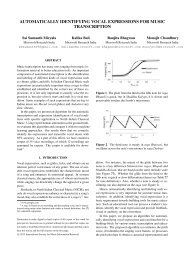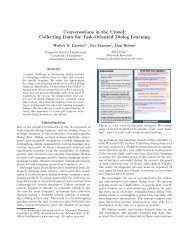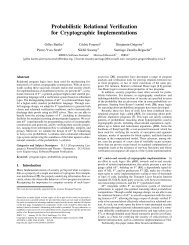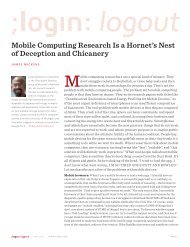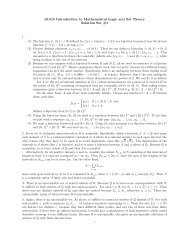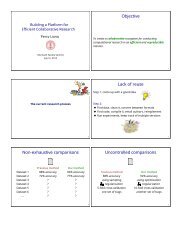PDF file - Microsoft Research
PDF file - Microsoft Research
PDF file - Microsoft Research
You also want an ePaper? Increase the reach of your titles
YUMPU automatically turns print PDFs into web optimized ePapers that Google loves.
<br />
h_{-2}<br />
h_{-1}<br />
h_0<br />
w_1 ...... w_l <br />
T_{-m}<br />
<br />
.........<br />
T_{-2} T_{-1} T_0<br />
Figure 3: Complete parse<br />
Figure 4: Before an adjoin operation<br />
h’_{-1} = h_{-2}<br />
h’_0 = h_{-1}<br />
Note that (w 1 ...w l ) needn’t be a constituent, but<br />
for the parses where it is, there is no restriction on<br />
which of its words is the headword.<br />
The model will operate by means of two modules:<br />
• PREDICTOR predicts the next word w k+1 given<br />
the word-parse k-prefix and then passes control to<br />
the PARSER;<br />
• PARSER grows the already existing binary<br />
branching structure by repeatedly generating the<br />
transitions adjoin-left or adjoin-right until it<br />
passes control to the PREDICTOR by taking a null<br />
transition.<br />
The operations performed by the PARSER ensure<br />
that all possible binary branching parses with<br />
all possible headword assignments for the w 1 ...w k<br />
word sequence can be generated. They are illustrated<br />
by Figures 4-6. The following algorithm describes<br />
how the model generates a word sequence<br />
with a complete parse (see Figures 3-6 for notation):<br />
Transition t; // a PARSER transition<br />
generate ;<br />
do{<br />
predict next_word;<br />
//PREDICTOR<br />
do{<br />
//PARSER<br />
if(T_{-1} != )<br />
if(h_0 == ) t = adjoin-right;<br />
else t = {adjoin-{left,right}, null};<br />
else t = null;<br />
}while(t != null)<br />
}while(!(h_0 == && T_{-1} == ))<br />
t = adjoin-right; // adjoin ; DONE<br />
It is easy to see that any given word sequence with a<br />
possible parse and headword annotation is generated<br />
by a unique sequence of model actions.<br />
3 Probabilistic Model<br />
The probability P (W, T ) can be broken into:<br />
P (W, T )= ∏ l+1<br />
k=1 [P (w k/W k−1 T k−1 )·<br />
∏ Nk<br />
i=1 P (tk i /w k,W k−1 T k−1 ,t k 1 ...t k i−1 )] where:<br />
• W k−1 T k−1 is the word-parse (k − 1)-prefix<br />
• w k is the word predicted by PREDICTOR<br />
• N k − 1 is the number of adjoin operations the<br />
PARSER executes before passing control to the<br />
PREDICTOR (the N k -th operation at position k is<br />
the null transition); N k is a function of T<br />
T’_{-m+1}



